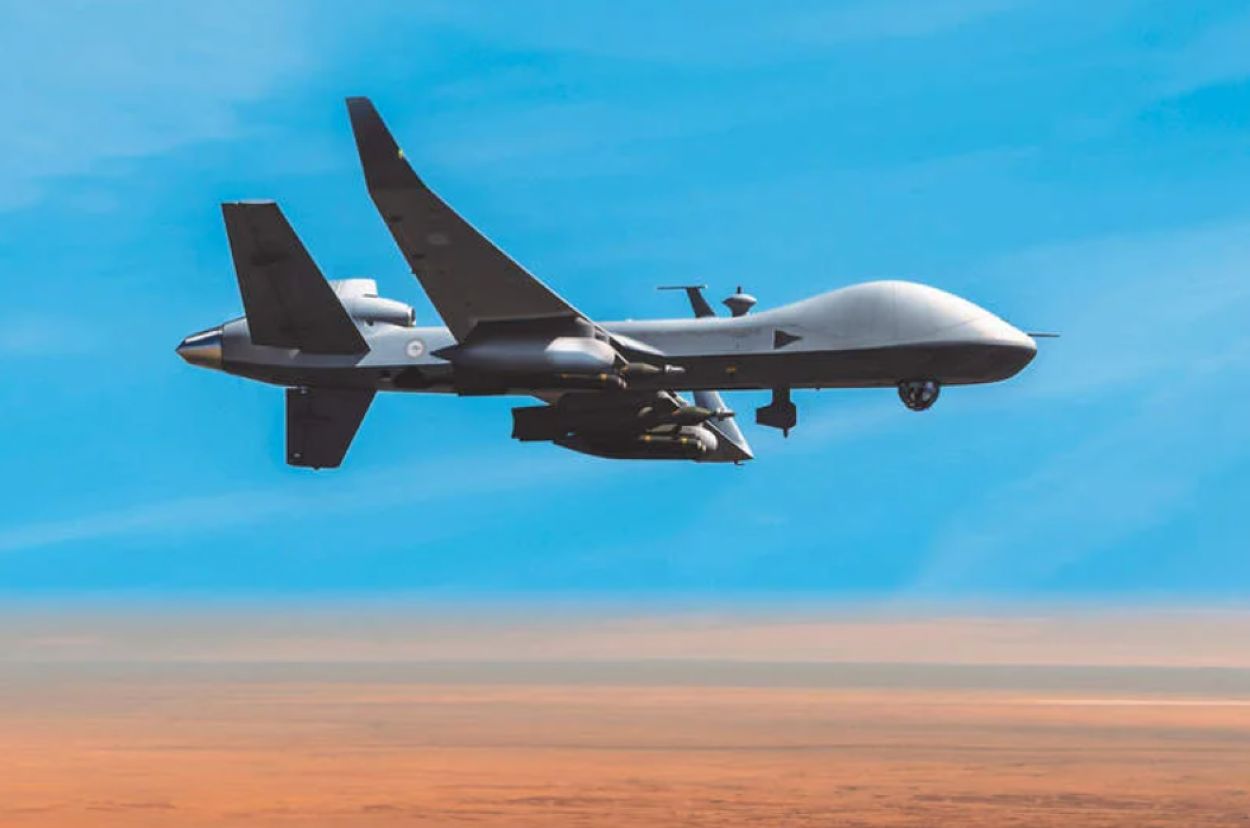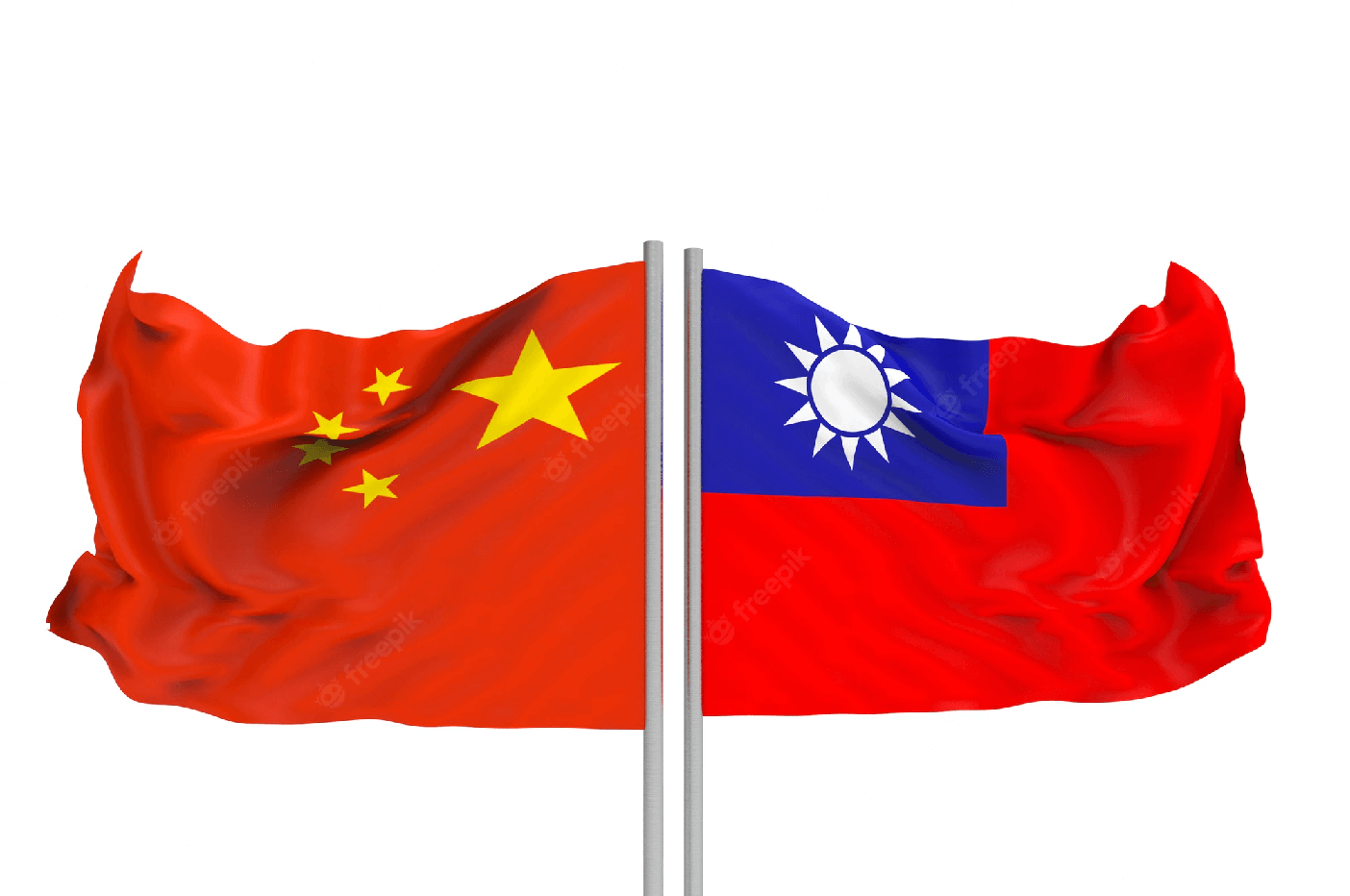Taiwan has denied plans to integrate itself with the US and Japan’s real-time battlefield intelligence-sharing mechanism using the General Atomics MQ-9B Sea Guardian maritime surveillance drones in what appears to be an attempt to dial down tensions with China.
With 18 Missiles ‘Blocked’, Russia’s Vitebsk-25 Electronic Warfare System Saves The Day For Ka-52 Alligator
Four Unmanned Aerial Vehicles (UAVs) will begin reaching Taiwan from 2025.
The Republic of China’s (RoC) Ministry of National Defense (MND) flatly denied a report which quoted unnamed US military and administration officials. They said the purpose behind arming Taiwan with drones was to access the system US and Japan use to have unified real-time surveillance and reconnaissance information simultaneously gathered by different drones and aircraft.
The Taiwanese leadership, too, has made such de-escalatory statements in the past, saying they do not want to provoke a war with China and that their military preparations have only been defensive in nature.
This also complements the People’s Republic of China’s (PRC) own hardline statements directed at the US and the North Atlantic Treaty Organization (NATO) and not at Taiwan. It criticizes the West for propping up Taiwan’s independence forces, exploiting the issue to provoke China and cause regional tensions.
Taiwan Denies Wanting Access To US & Japanese Intelligence
A report by FT, quoting four people familiar with the project, said Taiwan acquiring MQ-9B Sea Guardian is a step towards becoming part of the surveillance and sensor network the US Navy and Japan Maritime Self-Defense Force (JMSDF) use.
The $217.6 million contract will also supply Taipei with two ground control stations, spare parts, and other support equipment, according to General Atomics. Taiwan has been looking at the MQ-9B Sea Guardian since 2020, when the acquisition was announced as a Foreign Military Sales (FMS) project.
“It could enhance the ability of Taiwan and its neighbors to gain a full, real-time picture of the People’s Liberation Army Navy’s movements in peacetime in the first island chain,” said the report.
“We will be taking a practical approach towards ensuring that integration is done as quickly as possible,” said one person briefed on the project.
The MND, however, instantly denied any such effort following the report’s publication. “The MND has not yet been informed of plans to share real-time data from naval reconnaissance drones with the US and Japan, as reported by some media outlets. We would like to kindly request that due diligence be exercised in verifying the source of information to prevent misleading the public,” the MND said in a Tweet.
Common Operational Picture
Such a capability would allow Taiwan persistent aerial surveillance of its maritime zone and an early warning of Chinese naval activities. This is the time China is expected to extend its normalized military activity into a naval encirclement – if it decides to take a military resort.
Sharing such intelligence with allies gives a theater-level overview of an adversary’s military movements, with a mere single unified battlefield picture smoothening the coordination and decision-making processes.
The MQ-9B can be controlled via satellite, which allows it to fly over the horizon for more than 40 hours, even in adverse weather conditions. It can be kitted with modular and swappable systems to perform Electronic Warfare (EW), Airborne Early Warning (AEW), and Anti-Submarine Warfare (ASW) roles.

The systems on the drone, as per the original FMS package, include L3 Wescam MX-20 multi-spectral targeting system, Raytheon’s SeaVue maritime multirole patrol radar, and Leonardo’s Sage 750 electronic surveillance measures system.
While it is not clear whether the Taiwanese Sea Guardians will carry weapons, reports claim the model has been envisaged to undertake anti-land and ship attack roles.
General Atomics has explored the possibility of arming the MQ-9B with a Joint Strike Missile (JSM), developed by Norwegian firm Kongsberg and the US’s Raytheon, if a computer-generated rendition from the company is to be believed. It can fire air-to-ground munitions (AGM) like the Hellfire and the JDAM.

Data Sharing Equals Military Participation
But using the drone’s battlefield data sharing with US and Japan implies serious escalatory intent on the part of the US that might actually motivate China to act. Simply said, a large theater-level common operational picture is as much an advanced capability as capital weapons like warships, aircraft carriers, or fighter jets.
A singular, fused battlefield picture shared between allies would be pointless without the allies’ military and command capabilities also coming into play, especially for a militarily weaker side like Taiwan’s. It portends a situation where Taiwan, the US, and Japan are merely fully aware of Chinese movements but cannot act on them to avoid escalation.
Having such a capability alone without the intent to act on it would be pointless, and both China and the US, and its allies, know this. Thus announcing strategic battlefield data-sharing implies US and Japan would lend their command and control, warship, and combat air response after making a suitable decision upon gaining a bird’s eye of Chinese military maneuvers.
Chinese Perception
China has always considered such military support to Taiwan as direct military backing, which it would view as a violation of the One China policy, aiding Taiwan independence parties and an imminent threat to its reunification foals. In other words, it is a defacto confirmation that the US will participate in fighting China in case it attacks Taiwan.
China’s perception that battlefield data sharing automatically translates into guaranteed US military participation can also be seen from its reaction to Taiwan’s announcement of acquiring the Link 22 tactical data link. Link 16 and Link 22 are a common system connecting all US and NATO aerial and ground platforms. The advanced Link 22 is more jam-resistant and has a longer range.
China’s Foreign Ministry and other defense commentators slammed the development, Foreign Ministry spokesperson Mao Ning calling it an “extremely wrong and dangerous move.”
A report in Global Times also quoted leading military expert Song Zhongping, who pointed out that the transfer of the Link 22 essentially proves the US would be commanding and directing Taiwanese operations.
“Once Taiwan authorities obtain the Link-22 system, it means that the island will be brought under the US combat command structure,” Song said. The Chinese calculation, therefore, seems to be that whether or not the US presses into service its military assets wouldn’t matter.
US & Taiwan Tiptoeing Around China
China’s sensitivity to direct US participation is also minded by the US leadership itself. On May 22, the White House was forced to downplay President Joe Biden’s comments where he said the US would intervene militarily if Taiwan attacked the US.
This was a massive deviation – the third time since late 2022 – from the deliberate strategic ambiguity that the US maintains on its plans if China moves on Taiwan.
He had made the same assertion in September and October last year, with White House aides nervously clarifying and waking back those remarks, announcing their adherence to the One China policy.
Even Taiwan’s leaders are wary of antagonizing China and have an element of de-escalation and rapprochement guiding their policy. Foreign Minister Joseph Wu in May clearly underplayed the risk of an imminent Chinese invasion saying they “think that war can be avoided…and they are trying to work together to prevent war from happening.”
“We will not provoke a conflict between Taiwan and China…Taiwan is not going to be a provocateur…We will ask for peace and stability across the Taiwan Strait,” Wu was quoted telling foreign journalists.
- The author can be reached at satamp@gmail.com
- Follow EurAsian Times on Google News




